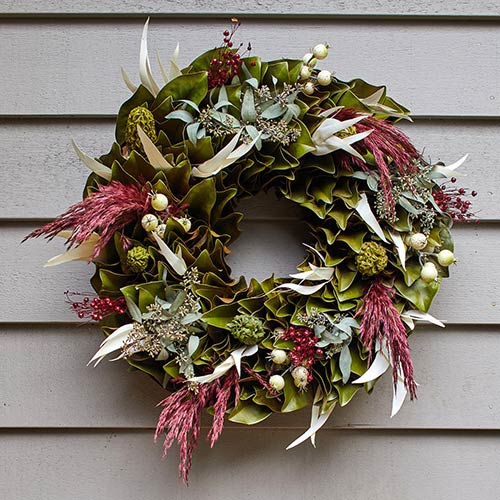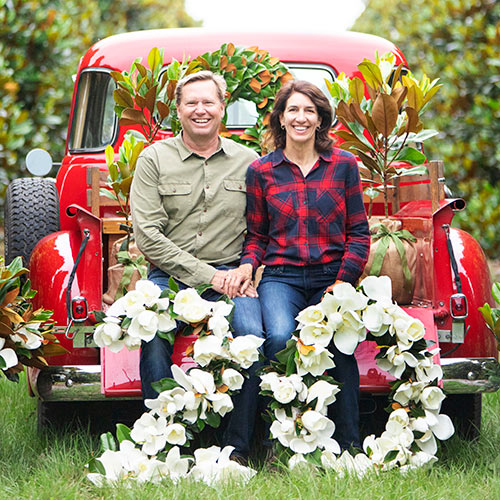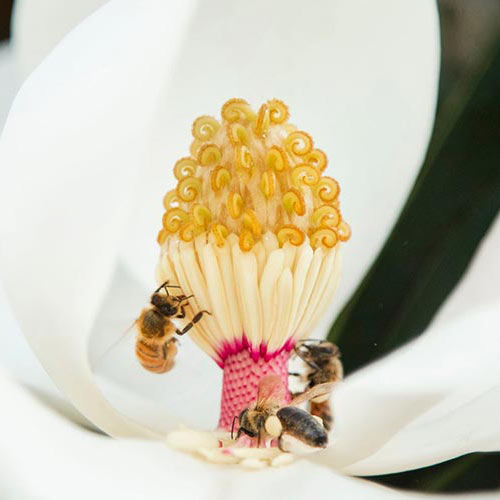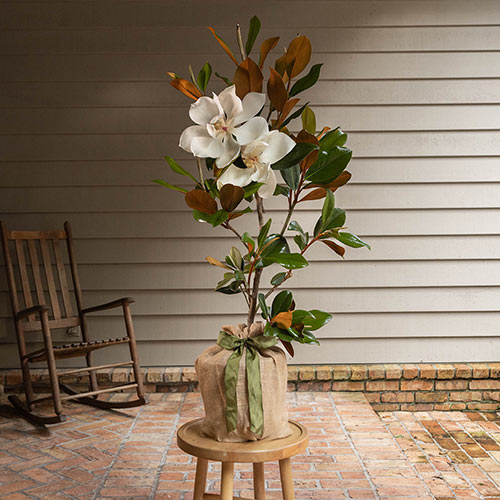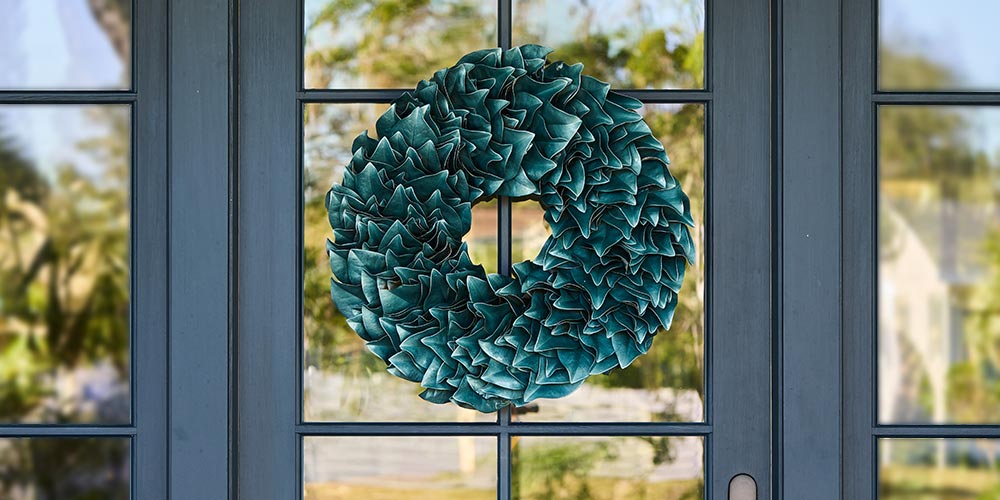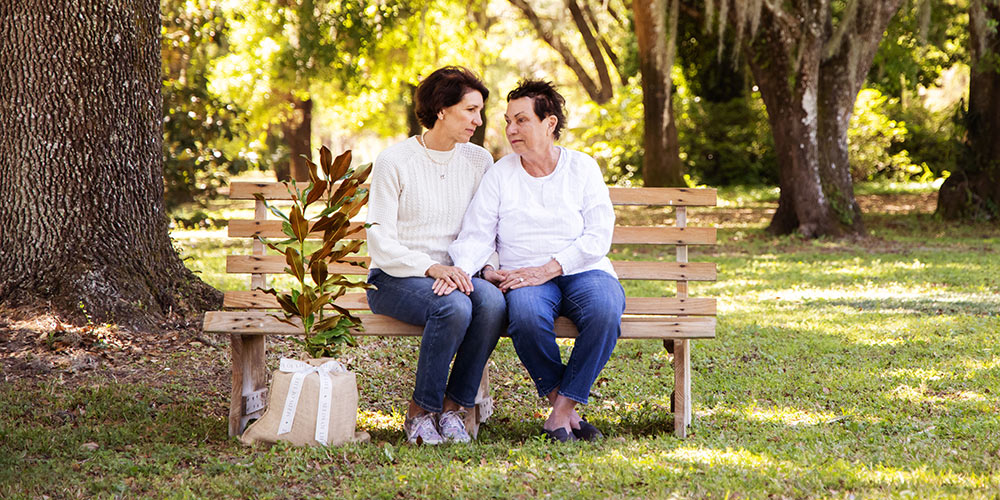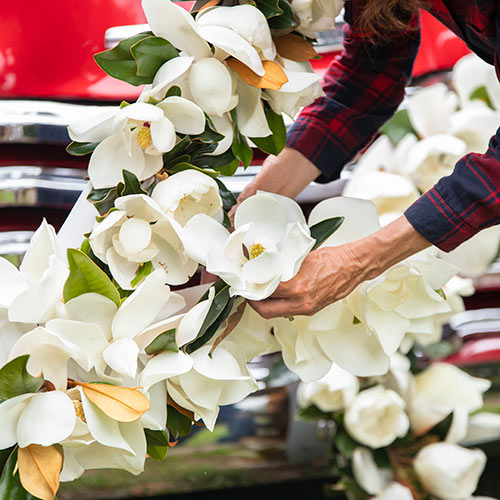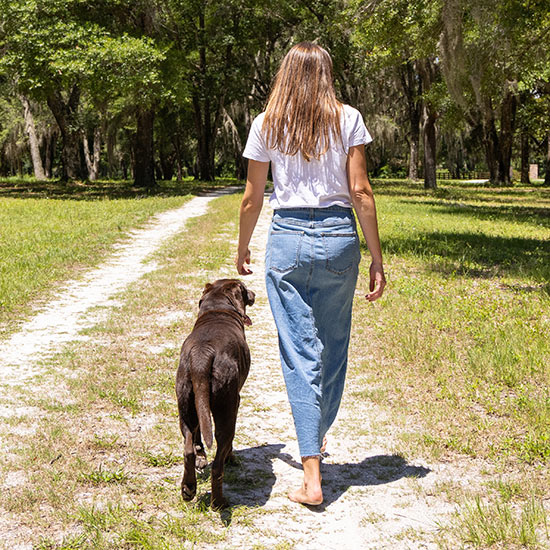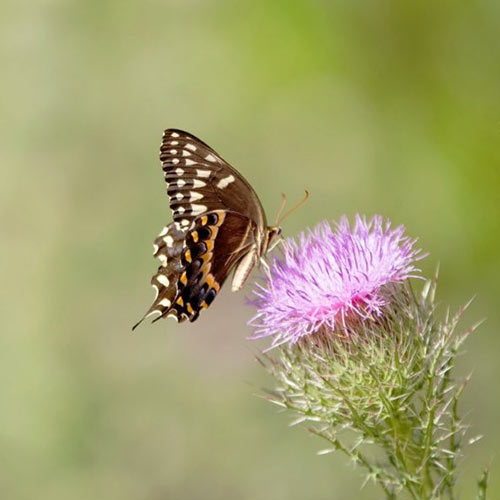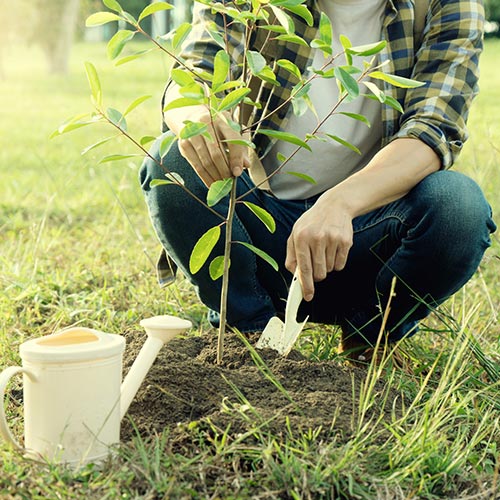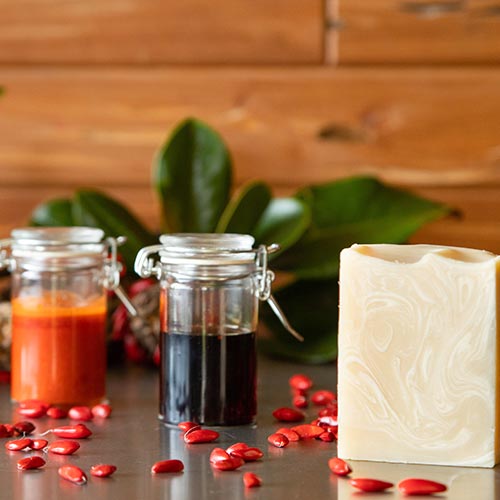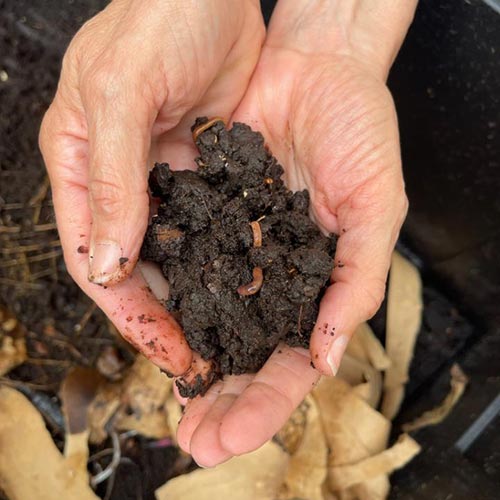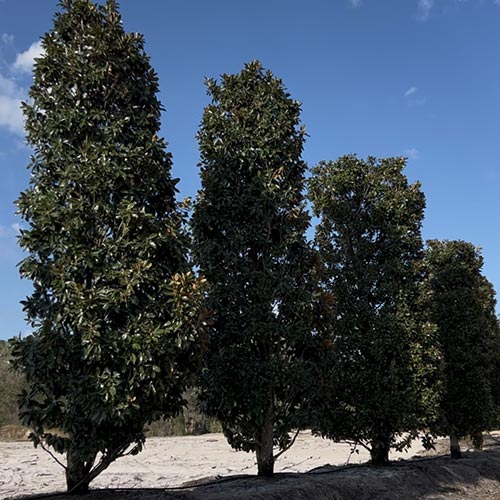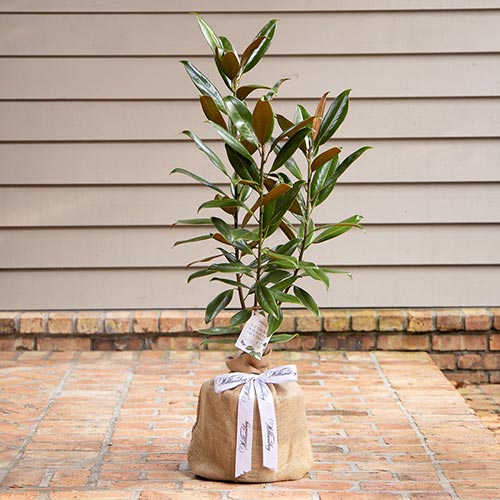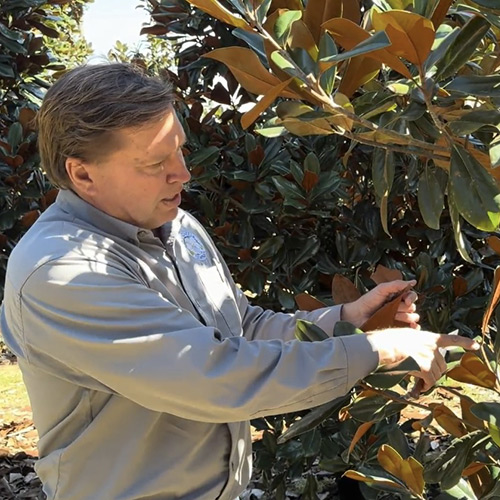The Art of Olive Tree Care: Cultivating Bounty & Beauty
April 3rd, 2024
Here at The Magnolia Company, we’re known for growing magnificent Southern Magnolias. However, we have a very special spot in our hearts and gardens for a family of trees – especially the ones that fruit!
One of the easiest trees to care for that yields fruit is the Arbequina Olive tree. With its gorgeous silvery foliage and delectable black olives, it’s every potted patio’s dream. These trees are notoriously low maintenance and hardy, making them a great introduction into the world of fruiting trees for newbie plant lovers and veteran horticulturists alike.
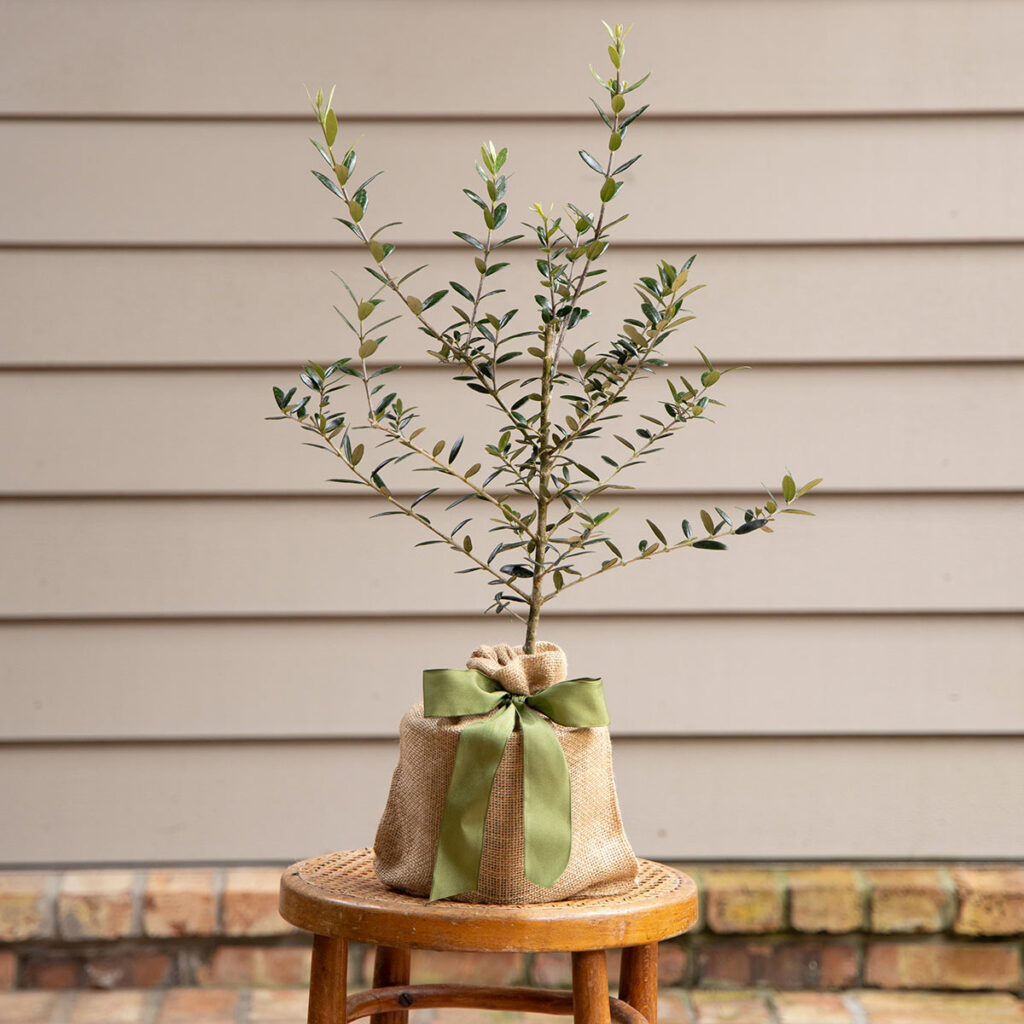
While Arbequina Olive trees are delightfully beginner friendly trees, there are a few tricks to getting these plants to produce fruit. We’re here to answer all the questions you have, as well as the ones you didn’t know you needed to ask!
If you’re the type of person who likes the quick and easy version of plant care, scroll to the bottom of this blog for the sparknotes.
Like always, we LOVE hearing from you! If you encounter a question or bump in the road with your olive tree (or any plant, for that matter), send us an email or a DM on Facebook or Instagram.
Now, on with the show!
The Perfect Plant
Arbequina olives are our pick (get it? Our pick, like picking fruit… yeah, we crack ourselves up) because it’s a popular selection in California for commercial olive production. In fact, close to 80% of olives planted in California are this particular strain because the plant is so durable and fruits prolifically.
Arbequina olive trees aren’t deciduous, so they’ll keep their beautiful foliage year round. Some leaves fall as they go through their life cycle. This is normal.
When we started growing olive trees 10 years ago, we noticed very quickly just how easy they are and how fast they grow. There’s very few insects that affect them, they’re disease resistant, they’re salt tolerant, and they’re drought tolerant. To put a cherry on top, they’re also super aesthetically pleasing, with their weeping branches and silvery foliage. Really, what more could you ask for in a perfect plant?
Location, Location, Location
Typically, when you choose plants for your patio or yard, it’s important to consider your climate. The US Department of Agriculture (USDA) created a map that separates the continental US into zones, and plants are often sold with information on their tag about which zones the plant thrives in.
One of the coolest things about olive trees is that they do incredibly well in a huge zone range! They’re considered hardy in zones 7-9, but they can survive in zones 6-10. They can tolerate temperatures as low as 20 degrees fahrenheit; in fact, they rely on the cold to fruit (we’ll talk about that later on).
Olive trees are Mediterranean in origin, so they’re used to all kinds of climates, soils, and even the worst of conditions. It’s in their genes to thrive!
So, here’s what you need to know:
- If you’re in zones 7-9, you’re good to plant an olive tree in the ground. Your climate is well suited to this tree.
- If you’re in zone 6 or 10, keep your olive tree in a container, like a pot on your patio or porch.
Zones 7-9 are the best zones for seeing fruit production; the other zones are likely to see smaller yields, even if the plant is healthy.
Zones 6 and 10 should plant in containers, so during the wettest or coldest months, you’re able to move your tree into a more protected area. Central Florida, where TMC is located, falls into zone 9, so we keep a watchful eye on our olives and do our best to protect them from the wettest months of the year.
To Pot, or Not to Pot – That is the Question
Yes, these trees do really well in containers!
Generally speaking, olive trees max out at 15-20 feet tall when they’re planted in the ground. They’ll stay on the smaller side when they’re potted (Julie & Matt, the owners of The Magnolia Company, have a potted one that’s about 8 feet tall and thriving).
Like most trees, olive trees like well draining soil and have very few other needs. Container planters will be just fine with potting soil and a pot that drains. In-ground gardeners should avoid areas that see standing water after rainfall.
Sun & Rain
Honestly, one of the only ways to kill this tree is to over water it.
Arbequina olives don’t like having “wet feet” – make sure they get some kind of water around once a week, be it from natural precipitation or your sprinkler system. As long as it’s in a well draining area, it can tolerate fluctuations in the amount of water it receives.
Give this plant lots of sun! They love it, since they’re originally desert plants. Arbequina olives need at least 6 hours of full sun a day. The full sun will also help prevent the plant from dealing with soggy soil.
Pruning, Pests, & Fertilizer
Don’t like the shape of your tree? Dealing with some dead branches? No worries, Arbequina olive trees handle pruning extremely well. Try and do the bulk of your pruning during the cold months, but occasional pruning throughout the year is unlikely to faze the tree or cause it too much stress.
Because these trees are so resistant to disease and pests, we don’t use any pesticides or fungicides in our growing.
You can choose to fertilize with a slow release fertilizer in the early spring, but again, these trees are desert growers. They’re used to thriving without rich nutrient bases, so don’t stress about this.
Truly, these trees don’t require much in the way of special care.
Use the Buddy System
Olive trees are self pollinators, meaning you don’t need to have two trees in order to see your plant produce fruit.
That said, keeping more than one olive tree has an interesting effect: you’ll get more olives! The trees don’t need to be next to each other; you could keep them on opposite sides of your yard and still see this effect.
Good Eats & Harvesting
Most olive tree species mature fully around the 2 year mark, so that’s when you can expect to start seeing fruit. Arbequina olives in particular produce a succulent, meaty black olive. They’re impeccably tasty!
The Arbequina olive blooms in the spring. Expect to see little green olives on the branches in the summer. They’ll sport a burgundy hue as they begin to ripen, and the burgundy will deepen into a purple, then black.
Wait until the olives are black before you decide to pick them!
In order to enjoy the fruits of your tree, you’ll need to go through a special salt brine curing process, which takes about 30 days.
If you didn’t see fruit from your fully mature tree this year, don’t panic. Your tree is probably fine. In warmer areas, olive trees aren’t as likely to fruit. This is particularly true when an area doesn’t see cool enough temperatures in the winter and early spring. The tree relies on the cold temperatures turning warm as a signal that it’s time to fruit. Not getting that signal will stop the tree from fruiting that year.
Here in Florida, we typically get fruit every 2 years or so because of the tree’s need for a cold season.
The Sparknotes
Caring for your olive tree is a breeze, especially if you keep these things in mind:
- This tree is a good fit for you if you’re in zones 7-9
- It will do fine in ground or in a container
- Olive trees need full sun!
- Make sure it gets water once a week, and let the soil dry out
- Be patient with the fruiting process and enjoy your tree!
Recent Articles
